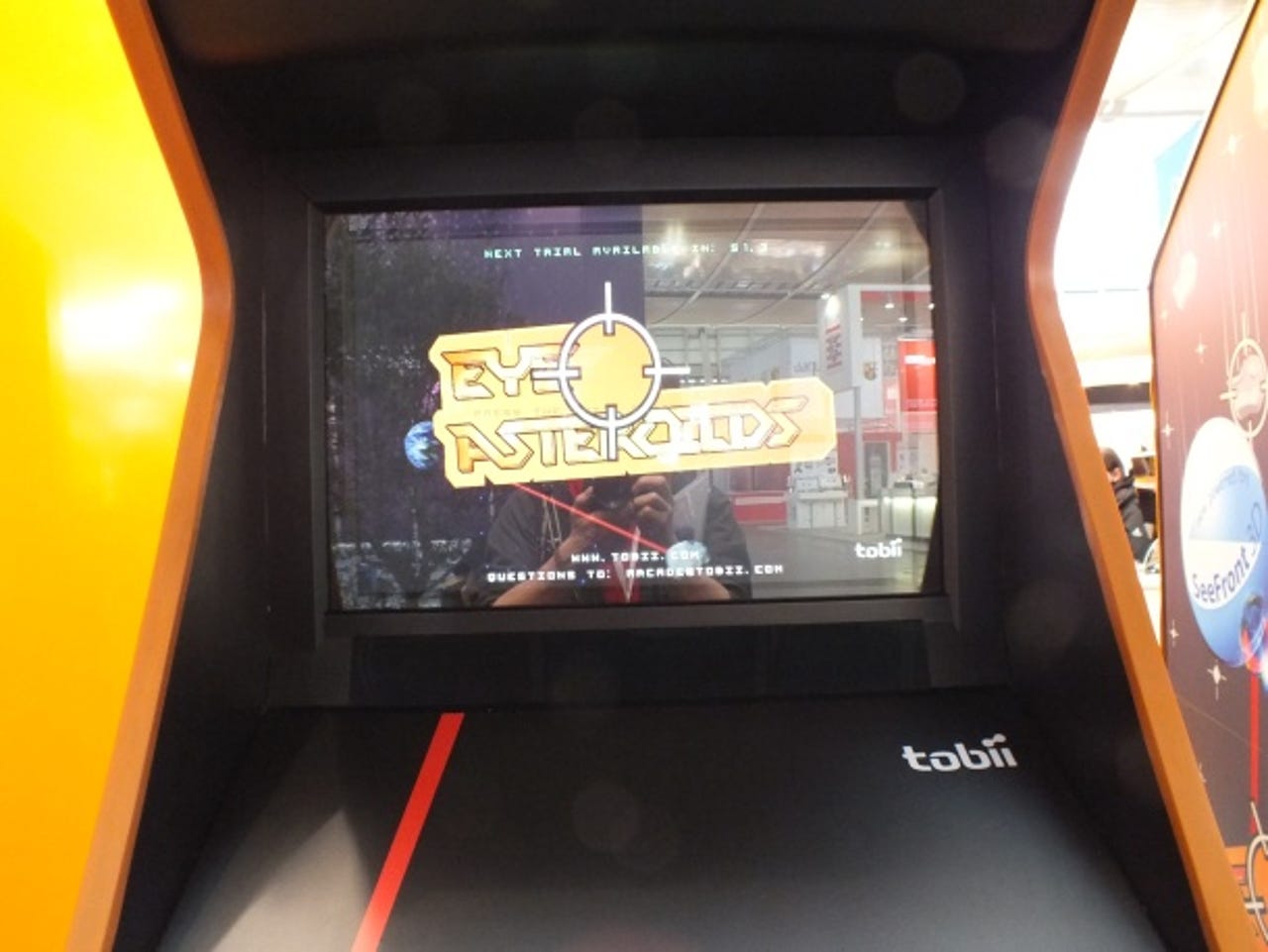Eye-controlled arcade games move closer


Eye-tracking technology on an arcade game
Eye-tracking specialist Tobii released a new version of its eye tracking technology — the Tobii IS-2 Eye Tracker module — at CeBIT on Monday.
The company says its technology is now more responsive and can fit in a wider range of hardware, including gaming machines.
The technology (pictured) uses two infrared projectors to illuminate the users' pupils and two small cameras to record their positions as they change, then feed this data to the onboard processors, which then output the person's eye position, pupil size and gaze position.
The new module is much, much smaller than its predecessor, which Tobii demonstrated at the show last year. It was also used in a prototype eye-tracking Lenovo laptop, which was tried out by ZDNet UK editorial staff in our offices.
The most striking thing about using the technology, both first and second generation, is the ease with which your brain acclimatises to it. ZDNet UK found that after about half a minute of use you forgot your eyes were a control interface; the feeling is similar to how, when using a desktop mouse, you never think of the hand controlling it and instead think about the cursor on the screen.
The new device is "much, much cheaper", Sara Hyleen, the company's corporate marketing manager, told ZDNet UK on Monday. The company did not disclose prices and said the device will be exclusively sold to original equipment makers as a component.
According to Tobii, the 200mm wide, 25mm deep and 20mm high module is 75-percent smaller and uses 40-percent less power than its predecessor.
Arcade game
At CeBIT in 2011 Tobii told ZDNet UK it hoped to see its technology branch out from medical and presentation use and into other fields, such as games. At CeBIT 2012 it demonstrated an arcade machine that uses its technology as the control interface.
The game uses the power of your gaze to destroy planet-threatening asteroids: a hard look fires a rock-shattering laser. The technology felt very natural and responsive, though the small red lights of the Tobii modules proved a bit off-putting. Also, a late stage of the game gave you the power to move the planet as well by swaying your head from side to side — an effective demonstration of how the Tobii modules can monitor, parse and combine varied data from their sensors, but uncomfortable to play.
Compared to the earlier version of the hardware, we found it more responsive, less jumpy and, on the basis of the demonstration appliances, easier to integrate into a finished product from an OEM perspective.
The technology being demonstrated was a pilot and Tobii did not disclose any major OEM deals, although Hyleen did say the company would be updating its partner page in a month's time.
Tobii eye-tracking technology
Tobii has overhauled the software stack as well; calbration used to take around 10 to 20 seconds but on the game machines and other demonstration appliances it took around 10. All the demonstrations felt more responsive than last year, apart from one — text scrolling — which still felt uncomfortable and unintuitive.
Tobii eye-tracking hardware
Though the company demonstrated a prototype laptop made in partnership with Lenovo a year ago, Tobii plans to pursue other markets due to the trend for slim, miniature laptops that is sweeping the technology industry, Hyleen said.
"The vision is to bring our technology to mainstream computers," she said, but "this [module] will not fit into a regular laptop because nowadays people want ultrabooks."
Instead, the company hopes to get its technology into industries where people need to stay focused on a multitude of items for long periods of time, such as airline baggage control or quality assurance in the manufacturing industries, and other "process-intensive industries that check you pay attention to the information", she said.
For this, the company hopes to partner with OEMs to get its equipment into large single-monitor computers, as with the demonstration machine.
The company is also looking into applications for lie detection, simulation and as a way of manipulating information in medical situations such as ultrasound evaluations, she said.